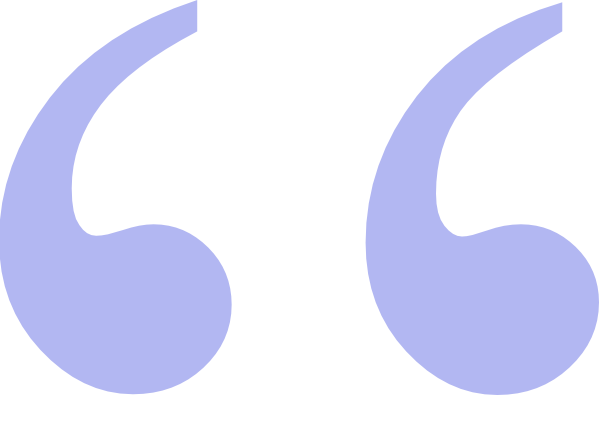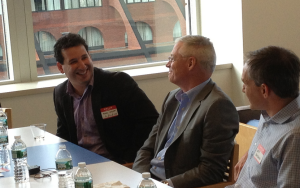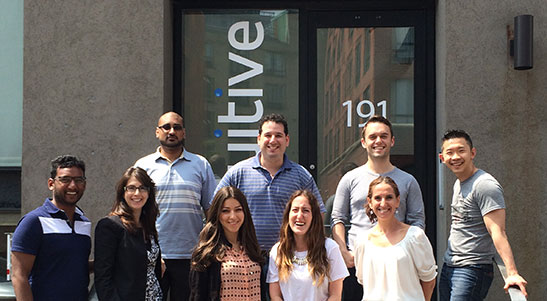We’ve had a lot of fun with our Second-Timers series, from successful SaaS CEOs who are now on their second SaaS company. It started with our overview here, and since then, we’ve had Lessons Learned for The Second Time from Nick Mehta from Gainsight, Kris Duggan from Betterworks, and more.
 Up next is one of my favorite CEOs and stories, Mark Organ of Influitive, and previously founder and first CEO of Eloqua. Eloqua was acquired for approximately $1 billion dollars by Oracle … after a long haul. Right as the SaaS and capital markets were bouncing back from Lehman Brothers and the ’08-’09 meltdown. In some ways, Eloqua was quite early to the current Marketing Automation category, and leaders such as Marketo, Pardot/Salesforce, Hubspot, Act|On, Silverpop, and other winners all owe Eloqua (and Mark) a bit in my opinion.
Up next is one of my favorite CEOs and stories, Mark Organ of Influitive, and previously founder and first CEO of Eloqua. Eloqua was acquired for approximately $1 billion dollars by Oracle … after a long haul. Right as the SaaS and capital markets were bouncing back from Lehman Brothers and the ’08-’09 meltdown. In some ways, Eloqua was quite early to the current Marketing Automation category, and leaders such as Marketo, Pardot/Salesforce, Hubspot, Act|On, Silverpop, and other winners all owe Eloqua (and Mark) a bit in my opinion.
Back in ’05 and ’06, when guys like me were trying to figure out where SaaS 2.0 was going and what it meant, everyone wanted to learn from Eloqua. We snuck into the Eloqua party at Dreamforce in ’06 to try to meet Mark and learn more. 🙂
Mark’s current company is Influitive. It’s a company that, like Eloqua, was perhaps a tiny bit early when it was started, blazing a path. But luckily, today the markets are just so much bigger and faster. Influitive lets you focus on your real champions, the customers that are your true advocates, and leverage them to more satisfaction and revenues. It’s on track to cross eight-figures in revenue in ’15 after a very strong, break-out ’14.
Mark’s learnings the Second Time around below:
10 Hard-Won Lessons I’ve Learned on How to Create Billion Dollar SaaS Category
The major you didn’t take in college. The person you could have asked out – but you bailed. That horrendous  email or tweet that should never have seen the light of day. How many of us have the running inner dialogue of “If I had a chance to do that differently, I would have done it better”?
email or tweet that should never have seen the light of day. How many of us have the running inner dialogue of “If I had a chance to do that differently, I would have done it better”?
Hindsight is 20/20 and looking back provides exceptional learning to those willing to dust themselves off and go for it again. In my second time creating a new SaaS category, I’m bringing the same passion. I’m tapping some of the ideas that worked the first time around, with my marketing automation pioneering startup, Eloqua. But this time I’m also making some notable changes based on valuable experiences or past mistakes to make ‘version 2.0’, Influitive, that much better.
Launching and scaling a SaaS company is hard enough. Developing an entirely new category is an Everest climb compared to the category entrant’s pleasant Sunday jaunt up the hill. You don’t have the luxury of just being a little better, faster, cheaper than the incumbent tech. There isn’t a reference point for comparison.
 Successful category creators evangelize the fundamental value of a new way of life. It is a revolutionary act, conjuring value from thin air – or better said, value from synapses, because categories are created in the minds of your prospects, not your marketing department.
Successful category creators evangelize the fundamental value of a new way of life. It is a revolutionary act, conjuring value from thin air – or better said, value from synapses, because categories are created in the minds of your prospects, not your marketing department.
As CEO of a new category, there is a non-negotiable principle that sets it apart. The prime directive is to market, nurture, exploit the category. Great category creators like Uber, Tesla, Salesforce have showed how it’s done. It is not easy. It means double the marketing requirements, because you need nurture the category you have helped to co-create with your early customers, and also market your company as the best example of that category. It puts extra pressure on the product team to get to fit fast and drive powerful word of mouth – necessary to keep distribution costs under control.
With that said, I have learned a few things about how to do this. Even with all of the disruptive technology around today, some things remain the same. But others have fundamentally changed, and/or I’ve learned what not to do on the second go.
Lessons learned, tactics repeated
- Customer success is the bedrock on which everything else is built – Staying customer obsessed is the cornerstone of creating a SaaS category. Not customer focused. Maniacal measurable customer value obsession. Do whatever you need to do to generate measurable value for the customer, even if it doesn’t feel “scalable”. While your customer profitability will initially be anemic at best, with this acute focus on delighting customers, attempting to scale without a proven and trusted method for managing your most important relationships is a fools errand. Delighted customers scale well through sharply higher LTV (account growth and referrals). More than makes up for the effort spent to deliver value. Once you figure out the model for making customers successful, you can automate to lower service costs. Our VP of Customer Success increased accounts per account manager from 8 to 45 in just a couple of years through intelligent automation – while increasing customer satisfaction and advocacy.
- Determined focus on lead generation – Success in B2B SaaS is largely about building a vision and efficiently converting the resulting awareness into leads. You can never stop generating leads …. Ever. I dream about lead generation and I obsess about the SQO (sales-qualified opportunity) numbers more than the MRR numbers. The SQOs – and the velocity of SQO generation (and even acceleration, if things are going really well) tell you whether or not your message is resonating. Lead flow that is increasing in quality and quantity is an indicator of healthy category creation. That the market is growing at an appropriate rate to support your hiring. A CEO needs to be involved from a lead gen standpoint due not only because more qualified, senior decision-maker leads that close larger and faster are generated, but because it is the best way to directly learn about how your message and product are resonating with the market.
- “Rocketship talent” – Find the up-and-comers, the stars before they’re universally acknowledged as stars. The biggest hiring mistakes I have made have been with people who can do the job in their sleep. Execs that have a gap to fill in their experience are excited to come to work every day, to learn and grow. Yes, they will make mistakes. But my experience is that their passion makes up for those errors 10 times over. I spend at least 25% of my time identifying and bringing on team members who are unproven legends in the making, and helping them develop into the executives they have the potential to become.
- A commitment to pushing the knowledge frontier – Creating a category relies on an unrelenting focus on thought leadership in order to win the war of ideas. Ideas compete much more viciously than even the fiercest of product rivals.
You’ll have the nay-sayers.
The non-believers.
Or worse…the non-interested.
To win them over you need to be producing innovative and exciting thoughtware. You need a sustainable, repeatable process for unearthing, winnowing and developing the unique ideas that will excite your market. Open minds = open wallets.
- Dominating market segments and delivering to the under-served hero – The goal of a category creator is to ultimately dominate a market. Dominate to me means a minimum of 5x RMS (relative market share). For example, if you are the market leader with 40% share, that means that the next largest player has 8%. Not that easy to do, if it’s a huge market. But if you define your initial target market narrowly enough, it’s doable. Huge markets are made up of hundreds or even thousands of nano-market segments. Finding and delivering value to these submarkets is a fundamental requirement to asserting a dominant market position.
Another important concept is that of elevating and celebrating the under-served hero. At Eloqua, it was the quantitative, process oriented demand gen marketer. At Influitive, it’s both advocate marketers and the advocates they serve. If you choose the right customer and user that is undergoing massive growth due to underlying disruptive technology, you will have a major brand asset that will keep on giving long into the future.
Learned the hard way, changing things up
-
 Greater emphasis on investing in people and culture – At Eloqua, I was a maniac on customer success. I wanted to be out in the field with the sales guys and the account managers as much as possible. Too late in my tenure did I learn that happy employees are key to category success, because nothing drives customer delight like delighted employees. This means supporting team member performance and development both in their everyday roles and in their long term aspirations. Peter Drucker famously opined that “Culture eats strategy for breakfast” and we recognize that in order to hit our strategic goals, we need a unique and healthy corporate culture to get there (Check out our awesome Glassdoor reviews!). Culture does not mean more perks. It means great management (and management training), accountability, transparency in decision making, inclusiveness, celebration. And above all, empowerment of every individual to do what they need to do, to say what they want to say, and create a better experience for themselves and everyone around them.
Greater emphasis on investing in people and culture – At Eloqua, I was a maniac on customer success. I wanted to be out in the field with the sales guys and the account managers as much as possible. Too late in my tenure did I learn that happy employees are key to category success, because nothing drives customer delight like delighted employees. This means supporting team member performance and development both in their everyday roles and in their long term aspirations. Peter Drucker famously opined that “Culture eats strategy for breakfast” and we recognize that in order to hit our strategic goals, we need a unique and healthy corporate culture to get there (Check out our awesome Glassdoor reviews!). Culture does not mean more perks. It means great management (and management training), accountability, transparency in decision making, inclusiveness, celebration. And above all, empowerment of every individual to do what they need to do, to say what they want to say, and create a better experience for themselves and everyone around them. - Better handle on board management – I generally felt that our board was a nuisance, at best, when I was CEO of Eloqua. Learning from my experience, it was my priority to build a world class, independent board right from the get-go at Influitive. We govern ourselves as close to public company style as possible for our stage. I talk to board members on a weekly basis and all board members receive a semi-automated report daily on our progress, which includes deals won, demos, new hires, and insights from our team. By keeping lines of communication open, meetings fun and productive and mixing up formal and informal sessions, our board is serving its purpose of providing direction and support.
- User experience at the core – Those of you who have used Eloqua software in the aughties would know that user experience was not a strong suit of the Eloqua product line. Here at Influitive, from day 1, we have had an internal mission to make sure our product is a joy to use. That means hiring people who have empathy for users, and have skills on mapping user flows, understanding friction points, conducting user research. A great UX is the most important feature-set. Not an overlay. Not something that we will get around to addressing at some point. We constantly experiment to find better ways to deliver to our users and leverage our product for our own needs wherever possible so we are in the ‘user-seat’, or eating our own ice-cream as we call it here.
- Swinging for the fences – While I did have big dreams at Eloqua, I was mostly concerned with surviving another quarter, another year. This time, we have higher ambitions, we want to win it all. And that means extraordinarily high rates of growth, with minimal decay rate on that growth. High growth in every time frame – this month, next quarter, next year, 3-5 years from now. Think about how Salesforce or LinkedIn is practically a different company every year, in order to keep their growth rate as high as possible. It means that the seeds of the next growth idea must be planted ahead of time. It means that the barriers against future competition need to be erected early. And it means that we and our investors will get a strong return from equity financing. Jason discusses going big on round 2 in a great post here.
- Being more proactive about ‘customer protection’ – Unearthing a category brings in the competition. Fast. Innovative. Without warning. We did not spend much time thinking about anti-competitive “moats” at Eloqua, as the company grew accustomed to a life without serious competition. That situation changed rapidly, and when it did, there were insufficient barriers erected to maintain high growth and renewal rates. This time, we are anticipating insanely vicious competition, and we have a plan. We are building a multi-layered defence. We are creating powerful incentives to join the Influitive system due to benchmarking across all of our customers, integrations with adjacent providers, building a proprietary network of power users, and cultivating network effects to provide increasing returns for every customer who uses our product.
Does experience guarantee success? Of course not, far from it. But a high rate of learning, constant sensing and iteration, goes a long way. I hope that the readers here can learn from my hard-won insights and build a category-defining SaaS company right, the first time.


